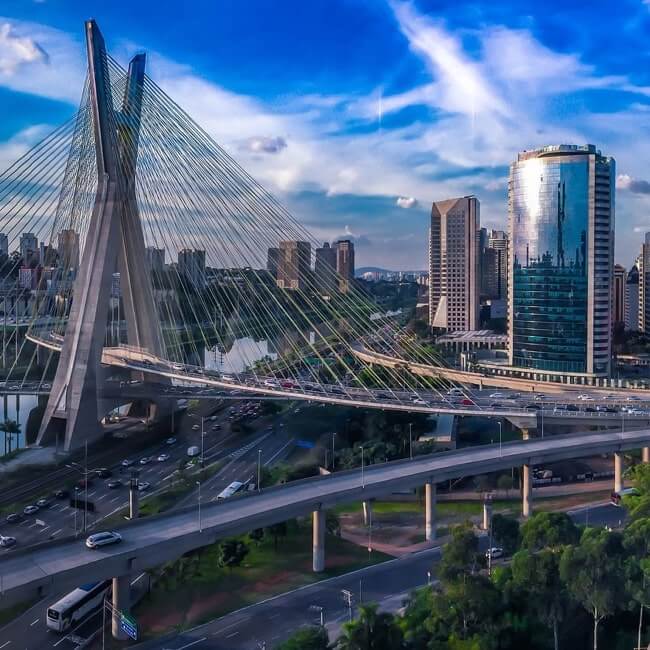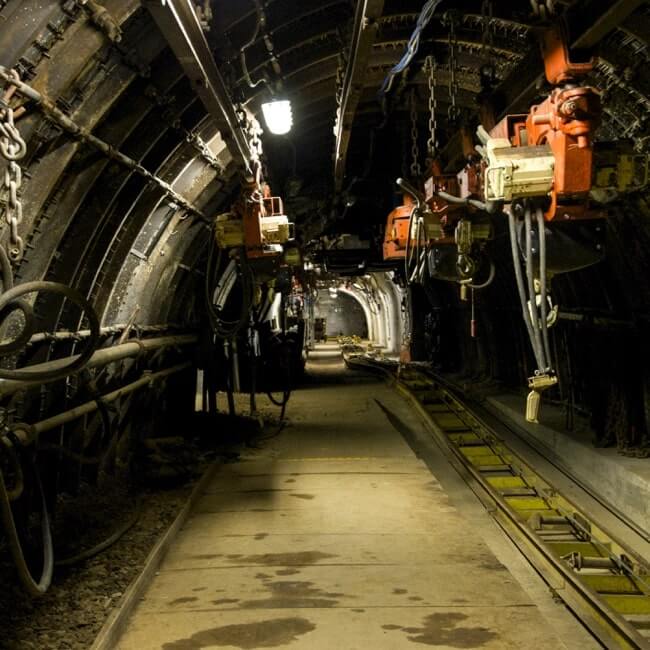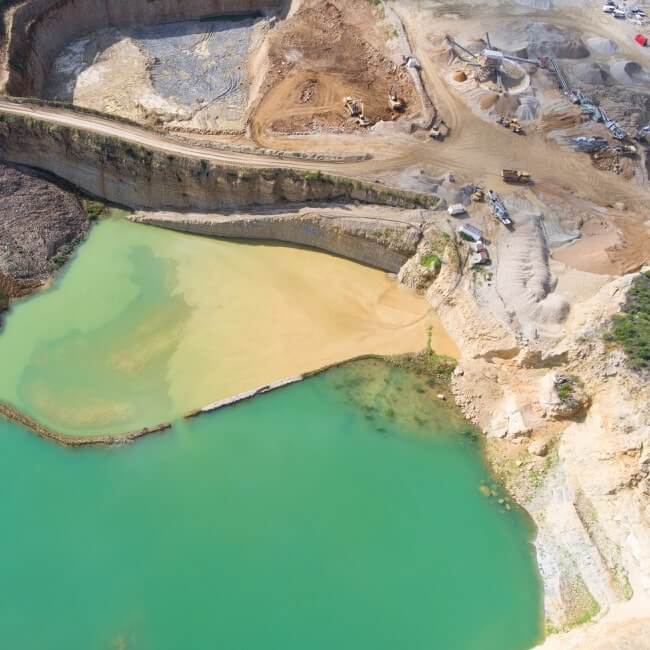Mexican railway sector expects investments of over US$590mn

President Andrés Manuel López Obrador (AMLO) has pledged to rehabilitate the country's rail lines with an infrastructure agenda focused on railways.
Ever since the private sector took over the operation of the railway system, infrastructure investments over US$11bn flowed in, Iker de Luisa Plazas, general director of Mexican railway association AMF, told BNamericas.
De Luisa also spoke about the status of the industry, the opportunities of the USMCA trade agreement, and the many infrastructure projects that this administration plans to conclude by 2024.
BNamericas: What’s the status of Mexico’s railway sector and how will it change under the USMCA trade agreement?
De Luisa: Freight transportation in Mexico is a worldwide success story. We occupy 11th place in the transportation of cargo and we are fully integrated with the US and Canada, with which we share the same infrastructure and operations specifications. The only European country in that ranking is Germany. We handle more cargo than Spain, Italy, France, the UK, etc.
For 24 years, the private sector has operated the freight rail network in Mexico. In these years, more than US$11bn have been invested.
In 1997, the concessions to operate freight railways in Mexico were awarded thanks to a series of tenders where the private sector modified and rescued a bankrupt company, Ferrocarriles Nacionales de México. Back then, US$500mn was lost a year. That was the size of the subsidy for Ferrocarriles Nacionales de México.
The investment outlook for this year is US$590mn. In other words, instead of costing US$500mn a year, the system has become financially viable.
With the USMCA, we are now fully integrated with Canada and the US. The location of industrial plants in the three countries and the complex supply chains, in the automotive sector for example, will continue to drive the railway industry.
One factor that explains foreign investment in Mexico is the proximity that railroads share. The proximity and connection between rail lines increases the connectivity of ports with borders. These are two examples of the strengths that the Mexican railway sector has.
North American freight railways recognize that the USMCA’s entry into force is a message of confidence and stability for the benefit of all three countries. It will promote the recovery of the region's economies after the pandemic and the railway sector will be essential for the reactivation of logistics chains. In this new stage of trilateral cooperation, cargo transportation plays a fundamental role, as it did under [the previous trade agreement (Nafta)], a period in which the sector became a 100% integrated and unique service in the world. The new trade agreement…will encourage railway companies to respond to the needs of an increasing volume of goods in the North American market.

BNamericas: Recently, media outlets published a railway plan created by regulator Arft and the communications and transportation ministry (SCT). Under the 50-year plan, authorities would regain control of the industry, boost competitiveness and establish a legal, regulatory and fiscal framework. Critics charge the plan would disadvantage railway concession companies. What is your view?
De Luisa: I think the president replied to rumors that same day and there is the answer. I think it was quite precise. The study is a long-term planning mechanism. It is necessary. We welcome planning that [considers] not just the terms of the administration, but that there is that long-term perspective.
There is a great example of long-term planning, and it concerns the expansion of the Veracruz port. It is a long-term project in stages, very well founded, very well thought out, with a multimodal public-private partnership (PPP). In other words, it is not only the expansion of the port but also the infrastructure support of railway and transportation. So, I like to cite this project as a great example of a long-term vision, where transportation is incorporated so that users of that new port get to choose their options for cargo handling. From almost 33km of railway the Veracruz port currently has, it will extend to 140km. So it is a great example of long-term planning, of the decades-long capacity for both port and railway.
BNamericas: The plan also identifies at least five rail projects under construction, five for which construction will start soon, and at least five proposals. Have you seen similar interest in rail projects before? How do you determine a project’s priority?
De Luisa: We must make the distinction between freight rail and passenger rail.
In a passenger project, the cost of infrastructure usually represents 70% of the total investment, while 30% usually covers equipment – trains, systems and stations. Normally, ticket revenues from passenger transportation help recover that 30% of the investment, which is also used for operation, maintenance and a small utility so that the equipment can be used. But how is the other 70% paid for? That is the type of question we should be asking ourselves. How is the financial plan and business model of each project? Because we can all have many ideas, but the numbers do not always add up. We all wish we had the best train, but the different needs of society compete for limited resources.
Passenger projects are very expensive, they are long-term investments. They have to be very well-founded. From the start, they have to have a 70% subsidy on infrastructure. Instead of going into detail on each of them, we have to see what merits they have and what social cost-benefit they will provide.
When the Mexico-Querétaro high-speed train was proposed, for example, it was going to have around 23,000 trips at that time. The Mexico-Toluca interurban train, on the other hand, will provide more than 200,000 trips a day, a ratio of 10:1. So there they have different justifications, the projects are different. Each one has to be analyzed with its corresponding merits.
Regarding the Mexico-Toluca train [for which construction resumed last year], SCT has to present a formula to finish the 30% or 20% that are still missing, especially in the area of Santa Fé, [west of Mexico City].
I believe that as long as the projects are well developed financially from the social cost-benefit point of view, both the public and the private part will find their feasibility. Each will benefit from the other because of their strengths.
BNamericas: Why is the government investing in railway projects in the southeast?
De Luisa: It makes sense to improve infrastructure in the south-southeast.
Freight transportation services in the south-southeast, before Hurricane Stan struck the region in 2005, moved 2.5Mt/year. The federal government, given budget limitations at the time, took 10 years to rebuild the infrastructure damaged by that environmental disaster on the coast of Chiapas state. The service was eventually reestablished between Chiapas and Puerto Salina Cruz in 2016.
The projects of the Tehuantepec isthmus train and the Maya train must be able to retake this market. AMF supports the Maya train and the interoceanic corridor. We have estimated that for every job created thanks to the railway industry, four indirect jobs are generated in the economy. Therefore, it makes sense that there is public or public-private rail investment in the south-southeast to generate economic development and formal employment.
The Tehuantepec isthmus train, called the interoceanic corridor, [is under construction and] will only be a cargo project and not a passenger one, as far as we know. It connects the expansion projects of the Salina Cruz port in Oaxaca and the Coatzacoalcos port in Veracruz through a cargo rail line, along with the trans-isthmus highway and some industrial parks that will be built there. We, as an association, support the Tehuantepec isthmus train project.
ALSO READ: Mexico's Tehuantepec isthmus rail corridor: Much more than a Pacific-Atlantic link
There was already a rail industry in the south that transported hydrocarbons, cement and steel and grains, to give a few examples. The characteristic of the Chiapas-Mayab train was that practically everything was in the south. It was traveling loaded to the south, but it was traveling empty to the north. So it makes sense that there is industrial investment such as industrial parks and logistics centers so that the load is more balanced and can be filled both in the south and north.
There is also the whole issue of trade with Central America. Around 150,000 trucks cross the Mexico-Guatemala border a year with significant growth and in less modern conditions, according to some data from a couple of years ago. It is difficult for Mexican cargo to enter Guatemala and Guatemalan cargo to enter Mexico, so transfers are made with losses, where there is no efficient operation. Well, therein lies the challenge. The Mexican rail network penetrates 2km of the Guatemalan side. The train from Mexico enters Tecún Uman, Guatemala, and there are many warehouses, steel distribution points. The Guatemalan government is investing in and expanding that area so that there is an important logistics trigger among the logistics trade of Mexico, Guatemala and Central America.
The Tehuantepec isthmus train obviously has its focus on connecting Salinas Cruz with Coatzacoalcos, but there are other components out there and that integrate with that trade we have with Central America and it would be necessary to attend this border crossing with greater emphasis, investment, systems and logistics.
BNamericas: Which other projets are important?
De Luisa: The port of Veracruz is being substantially expanded under a public-private scheme. In 2019, Veracruz handled 28Mt. Among that cargo stood out 1mn cars, 1mn containers, 2.4Mt of minerals, 4Mt of hydrocarbons and 7Mt of grains. Railroads handled 28% of the port's cargo with only a 42km rail line within the port. Now, with the expansion of the port, there will be 133km of rail lines. This is a great example of long-term multimodal vision.
There is also Guadalajara’s metro line No. 3 in Jalisco state, which is due to open this year, according to reports from the Jalisco state government and the SCT. And Monterrey’s metro line No. 3 in Nuevo León state, which is also very well advanced. For the latter, the infrastructure was finished, the issue was the equipment tender, which was stopped but later re-launched by Nuevo León’s state government.
The mobility plan for the Felipe Ángeles international airport (AIFA) has contemplated some rail passenger transportation projects. But we still do not know the study or the proposal. We understand that something will be built there.
- Ongoing projects
| Project | Status | Capex | Start date |
|---|---|---|---|
| Maya train | Under construction | US$6.7bn | 2020 |
| Tehuantepec isthmus rail corridor | Under construction | US$1bn | 2020 |
| Mexico-Toluca interurban train | Under construction | US$5bn | 2015 |
| Guadalajara metro line No. 3 | Under construction | US$2bn | 2014 |
| Monterrey city metro line No. 3 | Under construction | US$523mn | 2013 |
- Confirmed projects
| Project | Status | Capex | Start date |
|---|---|---|---|
| Cuautitlán-Huehuetoca suburban train expansion | Awaiting construction | 5.8bn pesos | 2021 |
| Suburban train expansion Lechería - AIFA (Phase I) | Awaiting construction | 10bn pesos | 2023 |
| Mexico City metro line A extension | Awaiting construction | 5.9bn pesos | 2023 |
| García-Monterrey airport light rail corridor | Awaiting construction | 13bn pesos | 2021 |
| Baja California coastal train | Awaiting construction | 10.2bn pesos | 2023 |
- Proposals
| Project | Status | Capex | Start date |
|---|---|---|---|
| Guanajuato-Querétaro interurban train | Pre-investment studies | N/A | N/A |
| Tijuana-Tecate interurban train | Early stage | N/A | 2021 |
| Mexico state-Querétaro high-speed rail link | Planning stage | N/A | N/A |
| Veracruz light rail | Cost-benefit analysis | US$155mn | N/A |
| Cancún-Tulum tourist train | Early stage | US$2bn | N/A |
BNamericas: National tourism board Fonatur, which oversees the construction of the Maya train, has not yet determined which type of locomotive it will use. Which would be the best option?
De Luisa: Cargo in North America is handled with diesel technology. Combustion is efficient for the volume and weights we handle in the freight sector. We handle more cargo than Europe, where electric locomotives are used. Today diesel-electric locomotives have proven to be a more efficient combination. In terms of cargo, emission differences between rail and motor transportation are 4:1. The right locomotive will depend on the capacity that we can transport, and this has to do a little with the fact that friction of steel wheels against steel rails is lower than rubber wheel against cement asphalt.
Electric passenger trains increase the project's investment 15-20%. So, if we said that 30% of the investment of a passenger train will be covered by the tickets and 70% have to be a long-term investment, a 15-20% increase for the electric option changes the investment perspective to 85/15 instead of 70/30. But there is low sulfur fuel to reduce emissions, the thing is that the fuel has to be available throughout the country.
BNamericas: How will the railway industry grow in the next five years?
De Luisa: Rail freight is closely related to the growth of the economy, there is a correlation. If we can calculate the correlation of the growth of the gross domestic product in a few years, we can predict what the performance of the railway load will be. I believe that the main challenges we have as a country are two: economic growth and the issue of insecurity. From the railroad point of view, we need economic growth for there to be cargo. If the construction sector picks up, it will require supplies, steel, cement, etc.
Freight rail grew to 3.1% annual aggregate, while GDP grew to 2.2% annual aggregate for the same period. At the surface transport level, the railroad mobilizes 25% of the goods and motor transport 75% (measured in ton-km).
Rail efficiency is exemplified in four key segments: bulk carrier, automotive, oil and intermodal. By volume, agricultural bulk is the segment with the highest importance in the railway movement. More than 20Mt/year are channeled through a complex network of private and public railway terminals, 35 of them have a large capacity, called carrousel terminals, with discharge capacity of 10,000t in 48h. These serve unit trains, which are defined as those where locomotives and cars do not change between origin and destination, seeking efficiency in the cycle of a one-way route with load and return empty.

Subscribe to the leading business intelligence platform in Latin America with different tools for Providers, Contractors, Operators, Government, Legal, Financial and Insurance industries.
News in: Infrastructure (Mexico)

SICT announces the construction of access to the Port of Veracruz and a bypass in Colima
Both states are economically important for the country and the regions due to their tourism and port activities.

Spotlight: The 7 new hospitals Mexico plans to start building this year
President Claudia Sheinbaum said construction of the hospitals for social security institute IMSS will be carried out by engineers from the defense...
Subscribe to Latin America’s most trusted business intelligence platform.
Other projects in: Infrastructure (Mexico)
Get critical information about thousands of Infrastructure projects in Latin America: what stages they're in, capex, related companies, contacts and more.
- Project: Salamanca Area General Hospital
- Current stage:

- Updated: 3 months ago
- Project: Altar - Sásabe highway
- Current stage:

- Updated: 3 months ago
- Project: Modernization and expansion of Puerto Tampico terminals (ex New multipurpose terminal at Tampico port)
- Current stage:

- Updated: 3 months ago
- Project: Sky Train Baja (Tijuana - Rosarito Elevated Train)
- Current stage:

- Updated: 3 months ago
- Project: Atlacomulco - Polotitlan highway
- Current stage:

- Updated: 3 months ago
- Project: Expansion of the Guadalajara International Airport
- Current stage:

- Updated: 3 months ago
- Project: Rehabilitation and Conservation of the Toll Free Highway Network in Tejupilco, Ixtapan de la Sal and Toluca (Caminos del Sur)
- Current stage:

- Updated: 3 months ago
- Project: Mi Macro Periférico Expansion
- Current stage:

- Updated: 3 months ago
- Project: New Agustín O'Horán Hospital
- Current stage:

- Updated: 3 months ago
- Project: Elevated Viaduct Playas de Tijuana
- Current stage:

- Updated: 3 months ago
Other companies in: Infrastructure (Mexico)
Get critical information about thousands of Infrastructure companies in Latin America: their projects, contacts, shareholders, related news and more.
- Company: Operadora Cicsa, S.A. de C.V. (Operadora Cicsa)
- Mexican firm Operadora Cicsa S.A. de C.V. designs and builds projects for the oil, chemical and petrochemical sectors. It manufactures equipment and provides services for the en...
- Company: Gilbarco Veeder-Root Mexico
- The description contained in this profile was taken directly from an official source and has not been edited or modified by BNamericas researchers, but may have been automatical...
- Company: Ingeniería y Obras Hidráulicas S.A. de C.V. (IOHISA)
- The description contained in this profile was taken directly from an official source and has not been edited or modified by BNamericas researchers, but may have been automatical...
- Company: Secretaría de Desarrollo Urbano, Obras Públicas e Infraestructura (SEDUOPI)
- Mexico's Campeche state Urban Development, Public Works and Infrastructure department, Seduopi, is a government office involved in the planning, development, and execution of pu...
- Company: Fondo Nacional de Infraestructura (Fonadin)
- Mexico's national infrastructure trust fund, Fonadin, is a government agency responsible for coordinating the financing and development of communications, transport, water, envi...
- Company: Evaluación Integral de Obras Civiles, S.A. de C.V. (EIOC)
- The description contained in this profile was taken directly from an official source and has not been edited or modified by BNamericas researchers, but may have been automatical...
- Company: Proacon México S.A. de C.V. (PROACON México)
- Proacon México is an engineering firm that specializes in underground work, operating in areas such as rail tunnels, highways, water infrastructure and mining projects. The comp...
- Company: Desarrollo de Terracerías S.A. de C.V. (DETERRA)
- The description contained in this profile was taken directly from an official source and has not been edited or modified by BNamericas researchers, but may have been automatical...
- Company: Prodemex-Proacon-Desarrollo de Terracerías
- Prodemex-Proacon-Desarrollo de Terracerías is a consortium formed by the Mexican companies Promotora y Desarrolladora de México (Prodemex) and Desarrollo de Terracerías together...




